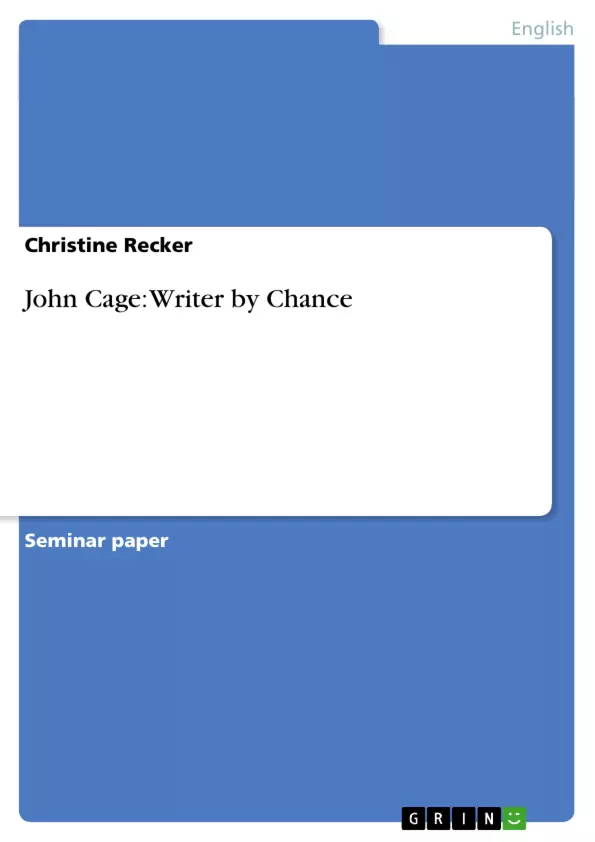This thesis mainly presents Cage on the basis of his literary work. The analysis focuses on his work "Diary: How to Improve the World (You Will Only Make Matters Worse)", with special regard to his use of chance operations. Moreover, emphasis is placed on Cage's ideas about art in general which are inseparably connected to his writings.
Inhaltsverzeichnis (Table of Contents)
- Introduction
- Biography
- Chance Operations
- The experiment
- The Diary
- Conclusions
- References
Zielsetzung und Themenschwerpunkte (Objectives and Key Themes)
This thesis explores the life and work of John Cage, focusing on his unconventional approaches to art and his innovative ideas about music, writing, and life. It examines his artistic achievements, particularly his use of chance operations in composition and writing.
- John Cage's life and work, with a focus on his artistic achievements.
- The concept and application of chance operations in Cage's compositions and writings.
- The philosophical and artistic implications of Cage's approach to art.
- The influence of Cage's work on various art movements and artistic practices.
- The relationship between Cage's ideas about art and his personal philosophy.
Zusammenfassung der Kapitel (Chapter Summaries)
- Introduction: This chapter provides an overview of John Cage's significance in music and writing, highlighting his innovative approach to art and his philosophical outlook. It also outlines the thesis's main objectives and focus.
- Biography: This chapter presents a brief biographical record of John Cage's life and work, emphasizing his key artistic achievements. It traces his musical development and explores his artistic collaborations and influences.
- Chance Operations: This chapter focuses on Cage's use of chance operations in both music and writing. The chapter introduces the method through a short experiment and analyzes Cage's work Diary: How to Improve the World (You Will Only Make Matters Worse) in the context of chance operations.
Schlüsselwörter (Keywords)
This thesis explores the life and work of John Cage, focusing on his use of chance operations in music and writing. Key themes include: chance operations, experimental music, conceptual art, prepared piano, silence, Eastern philosophy, Zen Buddhism, and the influence of Cage's work on various art movements.
- Citar trabajo
- Christine Recker (Autor), 2005, John Cage: Writer by Chance, Múnich, GRIN Verlag, https://www.grin.com/document/42014



